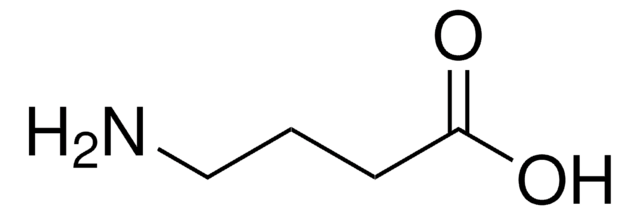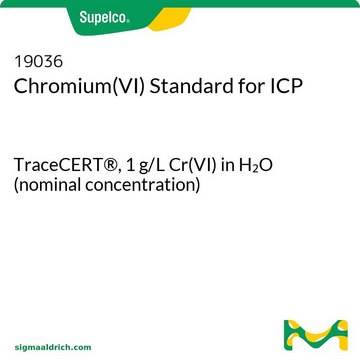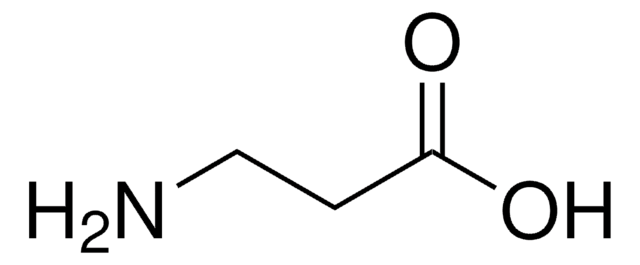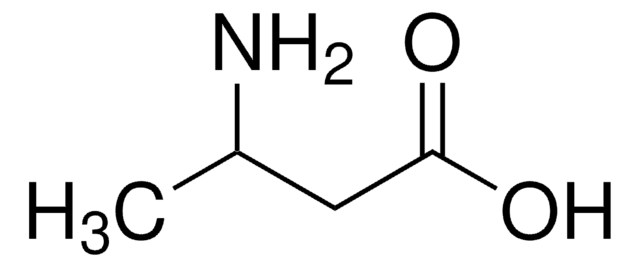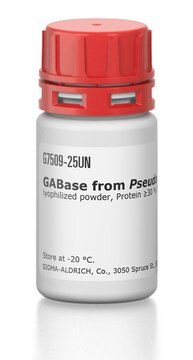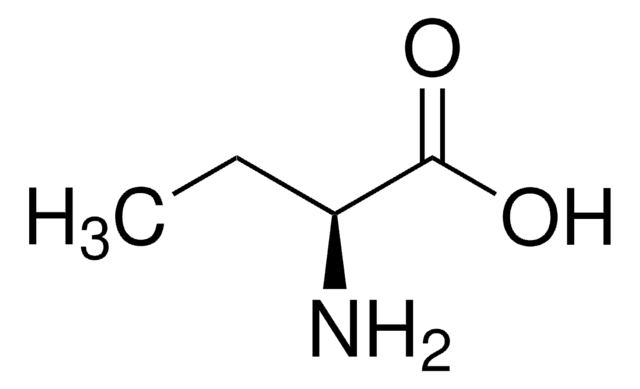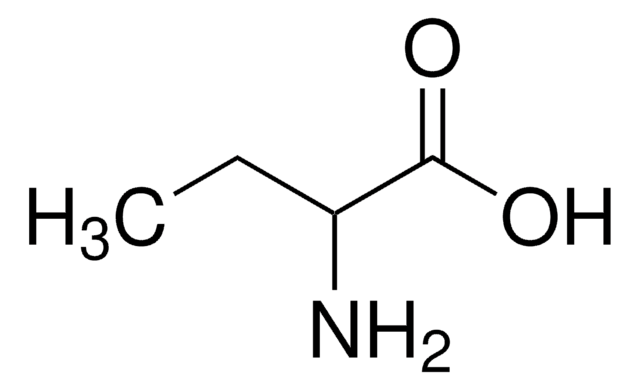A2129
γ-Aminobutyric acid
≥99% (TLC), powder or crystals, inhibitory neurotransmitter
Synonyme(s) :
GABA, Gammalon, gamma-Aminobutyric acid, 3-Carboxypropylamine, 4-Aminobutanoic acid, Piperidic acid, Piperidinic acid
About This Item
Produits recommandés
product name
γ-Aminobutyric acid, ≥99%
Pureté
≥99%
Forme
powder or crystals
Conditions de stockage
(Tightly closed. Dry.)
Couleur
colorless
Pf
195 °C (dec.) (lit.)
Solubilité
water: 50 mg/mL, clear, colorless
Chaîne SMILES
NCCCC(O)=O
InChI
1S/C4H9NO2/c5-3-1-2-4(6)7/h1-3,5H2,(H,6,7)
Clé InChI
BTCSSZJGUNDROE-UHFFFAOYSA-N
Informations sur le gène
human ... GABBR1(2550) , GABBR2(9568) , GABRA1(2554) , GABRA2(2555) , GABRA3(2556) , GABRA4(2557) , GABRA5(2558) , GABRA6(2559) , GABRB1(2560) , GABRB2(2561) , GABRB3(2562) , SLC6A1(6529) , SLC6A11(6538) , SLC6A12(6539)
rat ... Gabbr1(81657) , Gabra1(29705) , Gabra2(29706) , Gabrb2(25451) , Gabrg2(29709) , Slc6a1(79212) , Slc6a12(50676)
Vous recherchez des produits similaires ? Visite Guide de comparaison des produits
Description générale
Research area: Neuroscience
Application
- in the preparation of GABA–BSA (bovine serum albumin)–GA (glutaraldehyde) conjugate, which is used as a control for GABA immunostaining
- in the macromolecule suppressed detection of GABA by magnetic resonance spectroscopy (MRS)
- in the intraintestinal application of GABA in order to increase intraluminal fluid secretion
Actions biochimiques/physiologiques
GABAergic neurons involve myorelaxation, anxiolytic treatment, sedation, and anesthetics. GABA can also influence heart rate and blood pressure.
GABA improves plasma concentration, growth hormone, and protein synthesis in the brain. It also plays a role in reducing blood pressure in humans. GABA acts as a potent hypotensive, diuretic, and antidiabetic agent. It also regulates serum lipids levels and the sensation of pain.
Anticorps
Code de la classe de stockage
11 - Combustible Solids
Classe de danger pour l'eau (WGK)
WGK 1
Point d'éclair (°F)
Not applicable
Point d'éclair (°C)
Not applicable
Équipement de protection individuelle
dust mask type N95 (US), Eyeshields, Gloves
Certificats d'analyse (COA)
Recherchez un Certificats d'analyse (COA) en saisissant le numéro de lot du produit. Les numéros de lot figurent sur l'étiquette du produit après les mots "Lot" ou "Batch".
Déjà en possession de ce produit ?
Retrouvez la documentation relative aux produits que vous avez récemment achetés dans la Bibliothèque de documents.
Les clients ont également consulté
Articles
Professor Rivnay (Northwestern University, USA) discusses using organic mixed conductors as an alternative to efficiently bridge the ionic world of biology with contemporary microelectronics.
Notre équipe de scientifiques dispose d'une expérience dans tous les secteurs de la recherche, notamment en sciences de la vie, science des matériaux, synthèse chimique, chromatographie, analyse et dans de nombreux autres domaines..
Contacter notre Service technique